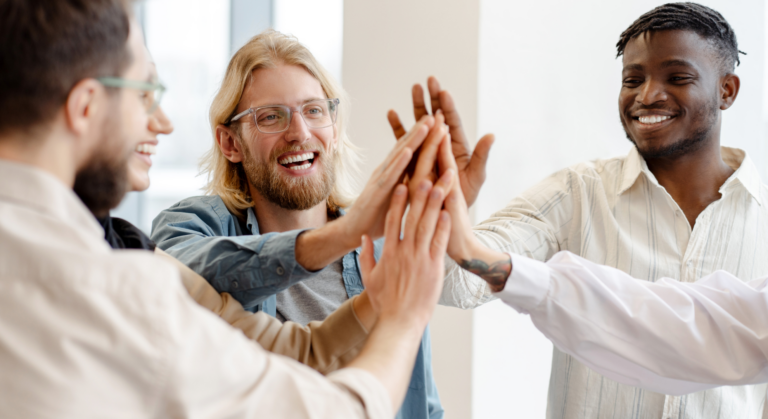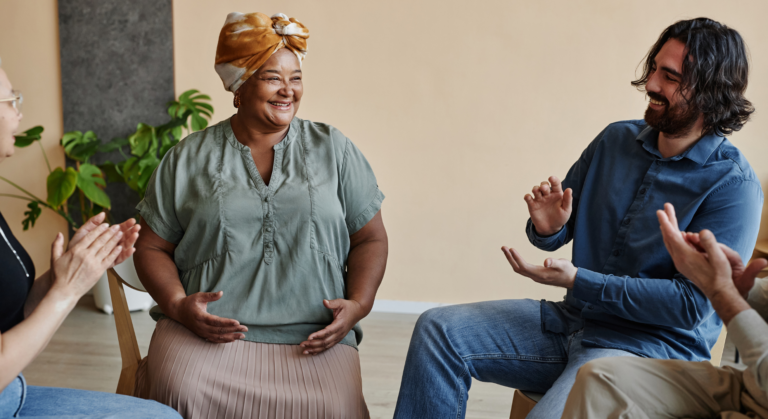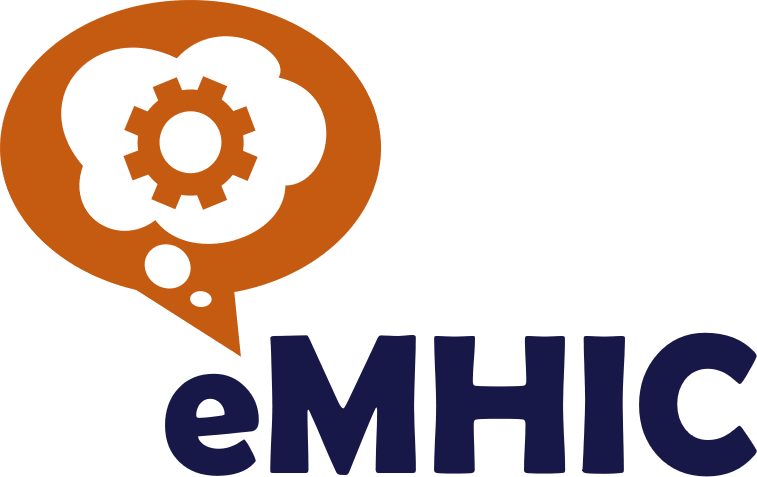Life doesn’t give you a rule book and it certainly knocks you for a six with unexpected challenges, grief, and trauma when you least expect it. When Angus was born in 2006 his diagnosis of Down syndrome was a shock, made more traumatic by the fact that my only exposure to people with Down syndrome had been as a school student visiting institutional care – overweight, bad hair, bad clothes and unable to speak, dress or toilet themselves. A google search quickly confirmed my greatest fear; life was not going to be easy, for him and it certainly wasn’t going to be easy for his family. He would never work. He would be plagued with health issues. He would be a burden on society.
Angus turns sixteen this October. Not only does he live with Down syndrome, at the age of 4 he was also diagnosed with Autism and he’s non-verbal. Today Angus is a magnificent human being – he is loved and loves unconditionally. He is gentle and kind, caring and sweet – qualities you hope every human has – but qualities often missing in shaping the world in which we live. I’m extremely proud of him – proud, because despite his challenges he brings joy to the world.
But this thought leadership piece isn’t about me. Or Angus. It is about understanding and shining a spotlight on the power of technology. The power of technology to connect people, to disrupt systems, to drive change and build community. Society has traditionally excluded people with a disability; infrastructure like buildings, transport and cities that are not accessible; schools, universities and workplaces that don’t consider different abilities and what value they might bring to businesses; health care that is fragmented, siloed and doesn’t understand the connection between physical and mental health, and why holistic health care is so important.
Technology’s role in disability support
I am mum to Angus, Holly and Harry – but I also work in suicide prevention and mental health and have, since first meeting Jack Heath and Jono Nicholas, in 1997 been obsessed with the role that technology can play in supporting the mental health and wellbeing of people.
Jack, after losing his cousin to suicide in regional Victoria, founded the world’s first online service for young people: ReachOut.com – https://au.reachout.com/. ReachOut was premised on the idea that technology could reduce the barriers to help seeking, and support young people in better understanding how to navigate the health care system. ReachOut was also a service that put young people at the core and centre of every design decision it made – co-design before co-design was even a thing!
When my dear friend Anil invited me to join an international panel Joining the Dots for Mental Health: Digital Tools, Recreational Respite and Self-Direction for People with Disabilities I didn’t really know how, in six minutes, I could cover what I think technology could offer society in its support of creating an inclusive, safe, supportive and caring world for people – those living with a disability, and those without. I carved the presentation into three core segments.
- What is the National Disability Insurance Scheme?
- What role can technology play in driving innovation?
- Why is co-design so important?
What is the National Disability Insurance Scheme?
In Australia we have a National Disability Insurance Scheme (NDIS), it is a person centric scheme designed to give people choice and control about the services they use, the people they employ and most importantly how they choose to live their lives. Over 500,000 Australians rely on the NDIS – every single one of them a unique individual with unique needs.
Every quarter the National Disability Insurance Agency provide a report to the Federal Minister and the State Ministers https://www.ndis.gov.au/about-us/publications/quarterly-reports. The report clearly articulates what is working well, what is not working, what requires further refinement and where money is being spent.
Technology plays a major role in the delivery of the scheme, and a major overhaul has seen the launch of the My NDIS app, a simple tool designed to support people in the management of their plan, and a simplification in the payment to providers. Top priorities over the next year include a new technology platform to make the claims process simpler, a crackdown on fraud, and a series of co-designed projects that support the voice of people with a disability in shaping the scheme.
The scheme is premised on The Convention on the Rights of Persons with Disabilities. The Convention follows decades of work by the United Nations to change attitudes and approaches to persons with disabilities. It moves from viewing persons with disabilities as “objects” of charity, medical treatment and social protection towards viewing persons with disabilities as “subjects” with rights, who are capable of claiming those rights and making decisions for their lives based on their free and informed consent as well as being active members of society.
This shift, along with a major funding injection of $30B+, has created a natural innovation ecosystem, with an opportunity to trial and test technologies that meet an unmet need. People with a disability, family members and entrepreneurs have collectively joined forces to change the way in which disability is viewed in the community and to use technology to drive new businesses, new approaches and new ways of working.
The technologies vary; from simple mobile phone applications through to funding models that will fundamentally change the way in which we think about disability, care for our most vulnerable, and funding for a new disability care workforce that is highly skilled and trained to embed technology into their day-to-day practice.
What role can technology play in driving innovation?
Disability should not mean disconnection from what life has to offer. When people feel disconnected and unable to participate meaningfully in life, their mental health can be compromised. Technology has the capacity to empower and support people with a disability, providing choice about what activities they participate in and when they participate in those activities – both online and in the community.
The social determinants of health; freedom from discrimination, meaningful participation in education, employment and the community, and opportunities for access to housing, social services and health care, are basic and fundamental human rights. And…. technology for the first time in history, if harnessed appropriately, has the capacity to provide people with a disability an opportunity to make choices about living, working and participating in community life. Apps and online communities, assistive technologies, artificial intelligence, wearable tech and sensors, can and will fundamentally disrupt the way disability care is provided. While high quality care should always be a priority, technology is also playing a critical role in promoting inclusion, facilitating participation, and cultivating improved support systems for people with a disability. These practical tools and approaches have the potential to nurture social health, enhance access to resources, and provide a platform for amplifying a diversity of voices. At a systems level the importance of technology and the need for continuous innovation, creativity and workforce development is urgent and has never been more exciting.
Technology has the capacity to fundamentally disrupt the way people with a disability engage with the community. The pandemic has driven a new model of care and pushed organisations to take their services online – communities that keep people connected or skype calls for clinical care – but truly disruptive services are using technologies to drive inclusion – to connect people, to facilitate better communication and to showcase compassion and care and the potential impact that technology can have in creating jobs and building societies in which people with a disability are considered an asset, not a burden.
In the last decade Australia has seen an evolution of innovative tech entering the market – and increasingly a focus on how the disability innovation ecosystem could be built to ensure more inclusive homes, schools, universities, workplaces, recreational settings and cities. Many of the technologies, platforms and tools have been created by people with a disability or families looking for better solutions in support and care.
Why is co-design so important?
I will end with, what I think is the single most important message –
‘People with a disability have a voice. That voice is important. That voice is diverse and rich. That voice needs to be heard.’
I have been privileged over my career to work with people, to hear their stories, to ask their opinions and to harness the power of voice to create cutting-edge technology and integrated health care solutions. People want to be heard and if you create the right environment, ask the right questions, and co-create a solution together it is highly likely that the service, the tool, the platform or the app will meet the needs of the community it was built for. Not because it had the best technology team, the smartest scientists, or the biggest budget – but because it genuinely and authentically gave voice to and created a solution for the people it is designed for.
Recently I was invited by the Commonwealth Governments Department of Health to run a co-design session to create a video featuring people with a disability to demonstrate how the community can respect, support and create safe environments for people with a disability as we progress through the uncertainty of the pandemic. The group worked together to showcase the unique challenges, both physical and emotional, that people with a disability might face.
People often confuse co-design with consultation but at its core, codesign is about building trust and empathy to have authentic discussions that create safe spaces for people to share their views. Our team were co-creators and the decision makers from inception. They helped to define the problem, developed the concept, and worked with the Department of Health and the creative team to deliver and participate in the end product.
I would like to acknowledge my fabulous co-facilitator Caleb Rixon from GenYus and our co-design colleagues:
- Dr Sharon Boyce – Chair of the Queensland Disability Advisory Council
- Peter Tully – Queensland Disability Advisory Council
- Uli Kaplan – Disability Advocate / CEO Life Is a Battlefield
- Tricia Malowney OAM, DLI, MAICD – Consultant/ Lived experience
- Linda Fraser – Departmental Officer, Department of Social Services
- Jeremy Sansom – Time 2 Train
Pre-interviews set the scene for two workshops, both online and run over a two-week period. Principles of engagement were discussed and included the importance of trust, respect for different opinions and why frank and fearless conversations were welcome. Also discussed up front were the parameters and limitations of what was feasible and the group were aware that budget and time constraints needed to be considered in what the end product would look like.
Key messages from the workshop relating to the brief included:
- THINK about members of the community with a disability, and their diverse needs.
- FEEL walk in my shoes – ‘we, us, our’ a level of empathy for the wellbeing of the community | everyone is different | just like you people want the same things – fun, family, friends, connection, excitement and inclusion.
- DO take action to keep people safe, supported and connected | emphasise respect for the decisions people make (eg. It’s not a big ask to put on a mask).
Three themes emerged: equality, strength and perspective.
Equality
- No one left behind
- All want to be healthy
- Togetherness, not otherness
- All on the same team
- Need to think of each other
- Same needs; might be met differently
- It’s not a competition
- We are not victims
Strength
- Respect challenges, respect capabilities
- Most people with a disability are living confidently most of the time
- Most people with a disability can confidently say what they need
- Different capabilities, different confidences
Perspective
- Bring people on a journey
- Everyone’s journey is unique
- See life through our lens
- People with a disability feel safer with restrictions in place
And a list of the dos and don’ts:
Do
- Show a person living their best life
- Include facts and stories
- Acknowledge the pandemic has, for some people with a disability – enhanced accessibility, enhanced agency and improved social inclusion
- Portray choice and control
- Make it about human safety
- Illuminate champions
- Include people with an intellectual disability
- Remind the community that people with a disability have rights
- Use appropriate language ‘person with a disability’ and ‘support worker’
Don’t
- Say ‘living with disability’
- Tell people what to do
- Make it divisive
- Make it tokenistic
- Dumb it down
- Victim-focused
- Overcomplicate things
In summary, the pandemic has had catastrophic consequences for society. It has included the loss of loved ones, financial stress and worldwide worker burnout as the healthcare system grapples with the increased demand for care. The pandemic has also allowed humanity to unite against this one common enemy, shining a spotlight on the role that technology can play in ensuring that health is a human right for all.
Appendix A – Expanded List of Themes:
Story telling and online communities of care
- The GenYus network https://genyusnetwork.com/
- Kindship – https://www.kindship.com.au/
- Living and Loving with Autism https://www.youtube.com/watch?v=XvA1GEqFhoc
- iCan – https://icannetwork.online/
- Life is a Battlefield https://lifeisabattlefield.org/
- TogetherAI – https://www.togetherai.com/
- Amaze https://www.amaze.org.au/autismconnect/
Skills and capacity building for education and employment and community participation
- The Lab https://thelab.org.au/
- The Field – https://dylanalcottfoundation.com.au/ability-fest/
- Inclusion Foundation https://inclusionfoundation.org.au/
- WeFlex – https://weflex.com.au/
- Time to Train – https://www.time2trainaspergers.com/
- What Ability Foundation – https://whatabilityfoundation.org.au/
- With You With Me https://legacy.wywm.io/
Assistive technologies and innovation in the home
- Akin – https://www.akin.com/
- Summer Foundation – https://www.summerfoundation.org.au/
- HireUp – https://hireup.com.au/
Alliances driving funding
- The Cerebral Palsy Alliance https://cerebralpalsy.org.au/
- Remarkable – https://remarkable.org.au/
- Headstream Innovation – https://www.headstreaminnovation.com/
Appendix B – Codesign:
What is Co-Design?
Co-design engages people in the design and development of systems – in health, education, justice, social services and the community more widely. It involves partnering between the people who are most affected by decisions and services at every stage in decision making from problem identification to design, development, delivery and evaluation.
“Co-design takes a ‘ground-up’ approach to finding solutions to social problems. It respects individuals as partners in an initiative for change and looks to create a system which is truly responsive to the people it intends to serve. Co-design begins with the people – their experiences, perspectives, values, challenges and understandings.” (VCOSS 2015)
“Co-production means designing and delivering public services in an equal and reciprocal relationship between professionals, people using services, their families and their neighbours.” (New economics foundation, 2011).
Co-Production in delivery requires co-production in governance, design, review and evaluation. Co-production is unlikely to work effectively when consumers are only equal partners in delivery. Co-production in both decisions about services and delivery of services has a ‘synergistic’ effect (more is achieved when both, rather than just one or the other, are used). Services doing just one or the other are missing the full potential co-production has to offer.” (CoMHWA)
Co-design approach
The co-design approach is underpinned by three principles which actively support and benefit stakeholders for whom, in this case are people with a disability. Stakeholders include people and families with a disability, professionals, policy makers, service providers and researchers.
- All stakeholders are involved as active participants throughout the design process from problem setting to problem solving.
- All stakeholders contribute as design partners; participating in idea generation as well as providing opinions and feedback on existing design concepts.
- Proposed interventions are understood and continually evaluated on whether they are relevant, meaningful and engaging to all stakeholders who stand to benefit from them, as well as taking into consideration potential for harm and their anticipated impact.

Figure 1: Co-design approach
The co-design framework follows six iterative stages:
- Identify Identify what problem is being solved.
- Define Set the principles and guidelines for engagement.
- Position Understand how the approach will create a meaningful impact.
- Concept Identify, generate and evaluate potential concepts.
- Create Build, validate and iterate design elements.
- Use Prototype models and evaluate potential effectiveness in real world settings.





